The pink sandstone haveli with its elegant arches and windows is easy to miss. Many of the locals have not even heard of the Anokhi Museum of Hand Printing, found down a narrow dusty lane at Amber, eight miles outside of Jaipur, where women walk in colourful saris and children suspend their noisy games to wave at you.
The museum was set up a decade ago to preserve the craft of hand block printing. This method of printing patterns onto cloth is used across India, but the tradition is strongest in Rajasthan where communities of hand textile printers once flourished. But the more efficient and more economical machine-printing process is damaging their livelihood and threatening to extinguish an important craft.
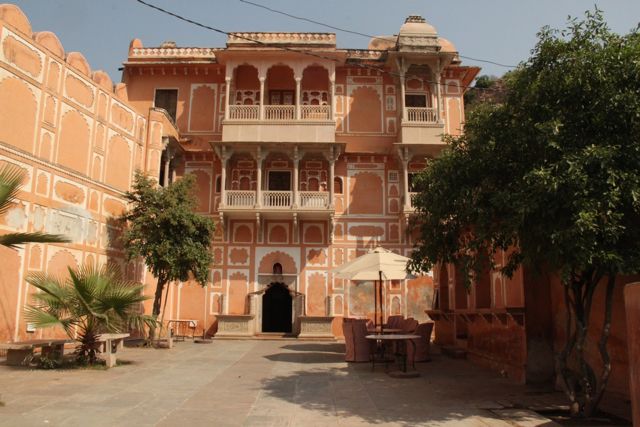

Inside, the cool museum is a welcome relief from the desert heat. Large boards in the open courtyard explain the lengthy process of hand block printing. Once the designs are finalised—often floral, paisley or geometric—they are carved by hand onto wooden blocks (which have been soaked in oil overnight and cleaned). These blocks are then used to print the pattern onto fabrics using natural vegetable dyes (like indigo, pomegranate rind and turmeric) in vibrant blues, reds and greens. The boards also describe life in the areas of Sanganer and Bagru, near Jaipur, where the craftsmen come from. These towns, like others in Rajasthan, are hot and dusty for most of the year. Locals rely on hand block printing and what little agriculture the soil permits for their livelihood.
More than a hundred garments and blocks are on permanent display in side alcoves and galleries across two floors. There are ethnic designs and patterns (such as the tunic-like kurtas) and also Western clothes in traditional prints, like knee-length dresses in shades of red and russet. On the roof-top terrace, a few craftsmen sit with their tools, ready to demonstrate their work to interested visitors. The UNESCO award-winning museum does not get many, so the spacious galleries can be wandered through at leisure.

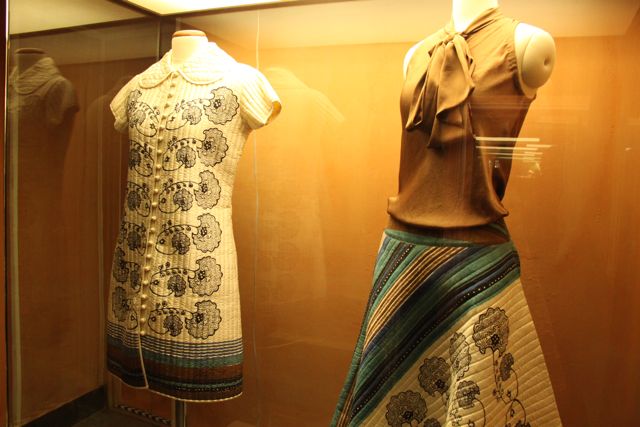

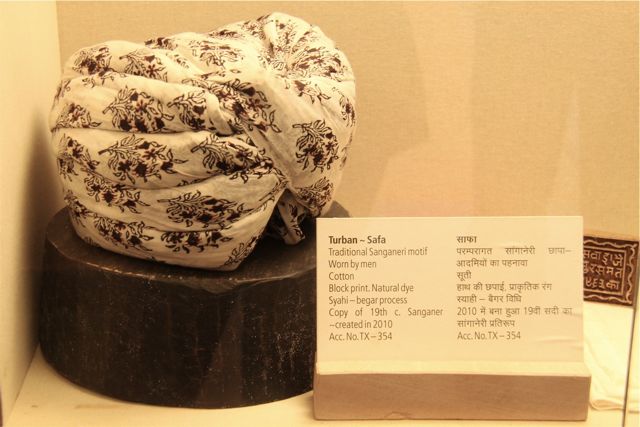
The museum is a cultural endeavour of the Anokhi clothing brand, which sells hand-block print garments in a handful of outlets across India. The company was set up in 1970 by Faith Singh, a British woman who married an Indian man and moved to Jaipur. She worked with local craftsmen and created contemporary designs with fabrics decorated in their prints. The bright and colourful clothing was popular at the tail-end of the swinging sixties. And it remains popular several decades later, both in India and abroad.
Ms Singh and her husband bought the dilapidated 17th-century mansion, which once belonged to a family of palanquin bearers for the royals, in 1989. “It would have been the easiest and most lucrative thing for them to convert it into a hotel,” says Pramod Kumar who was part of the team who later built the museum. But the family did not want to monopolise meagre water resources, and decided a museum dedicated to the hand block printing craft would be more beneficial. There is a section that details the sensitive restoration of the building with “before” and “after” photos.
Rachel Bracken-Singh, Ms Singh’s daughter-in-law, was instrumental in creating the museum in 2002. “Faith had meticulously maintained archives since 1969 and we spent months going through them to see what would go into the museum,” says Mr Kumar. The result is a “commitment to the preservation of craft techniques and traditional patterns”, says Ms Bracken-Singh.

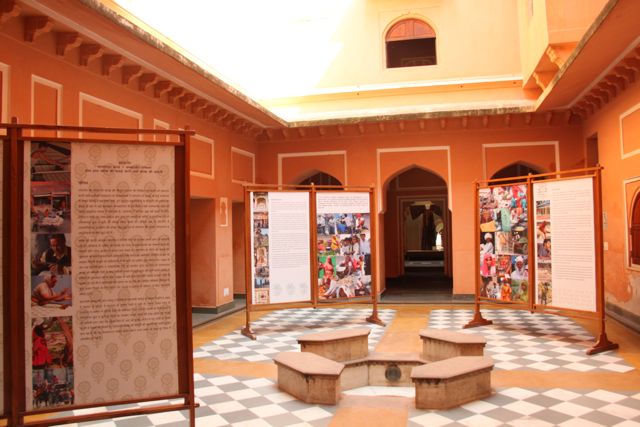
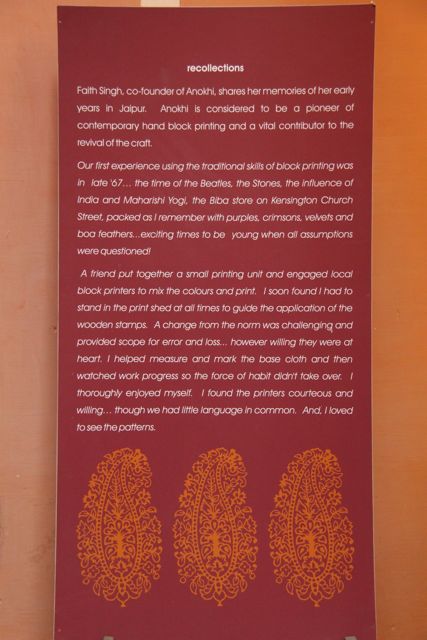
But it has a modern approach too. The team is always looking for new craftsmen and techniques to develop new garments in the main workshop on the outskirts of Jaipur. They have worked with a British designer to re-interpret William Morris’s prints, made costumes inspired by the Russian theatre, and worked their patterns into contemporary fashion—all of which are showcased in temporary exhibitions. Mr Kumar claims that “Anokhi is one of the reasons hand block printing is still in existence in India.” The museum may support their business interests but it does an important job of preserving a local craft too.
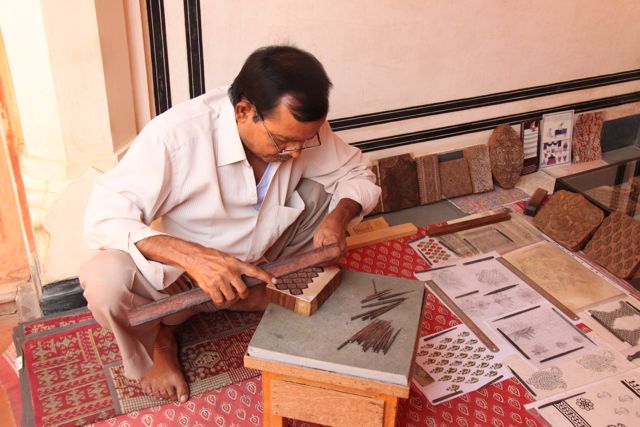

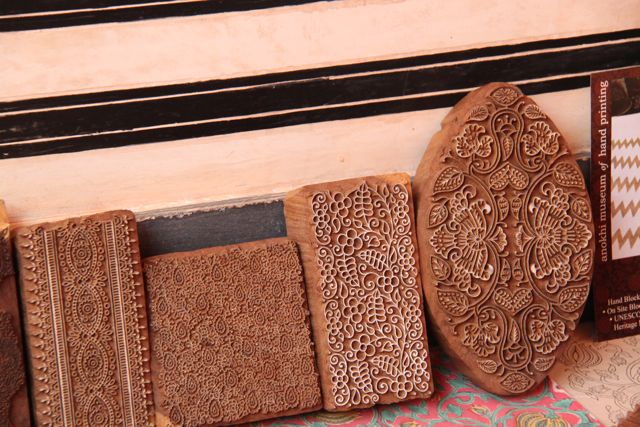
Anokhi Museum of Hand Printing, Chanwar Palkiwalon ki Haveli, Kheri Gate, Amber, Jaipur, Rajasthan, India
***
Published in Prospero, the Books, Arts and Culture blog of The Economist on November 8, 2012 as Colours of the Rainbow



wonderful!! i missed this on my Jaipur trip, but a more leisurely trip might be in the offing sometime soon, and I will def add this museum to my list then!
Thanks, Anu! It *is* a wonderful place – and very close to Amber fort (which I am sure you will visit the next time – so combine this with that)
Wow! I loved this story. So nice of Faith to convert the haveli into a museum instead of a hotel!!
I LOVE Rajasthani block prints. This is a place I would like to visit, to know more about the processes that go on behind those beautiful pieces of fabric that I so adore. 🙂
Yes, a hotel would have such an easy and lucrative option – I love what this family has done for Rajasthani prints and fabric. I have some pics from the Anokhi factory also, will try to post them here soon.
Very pleased to read this post as block prints and the world of textiles are very dear to my heart as a textile and clothing designer, myself. It does, however, break my heart that Kutch and its villages, namely Ajrakhpur and Damadhka are sadly neglected in a discussion about block printing. This craft lives on there and in my opinion is still an active part of the life of the region and not a museum craft.
I agree, Nina – there are several pockets in India where local printing craft is neglected and slowly disappearing because machine work is much less expensive. But in Rajasthan too, it is not a museum craft but alive and thriving.
I have three words or your post AND Anokhi…adore, adore and adore!
Thank you, Lakshmi!